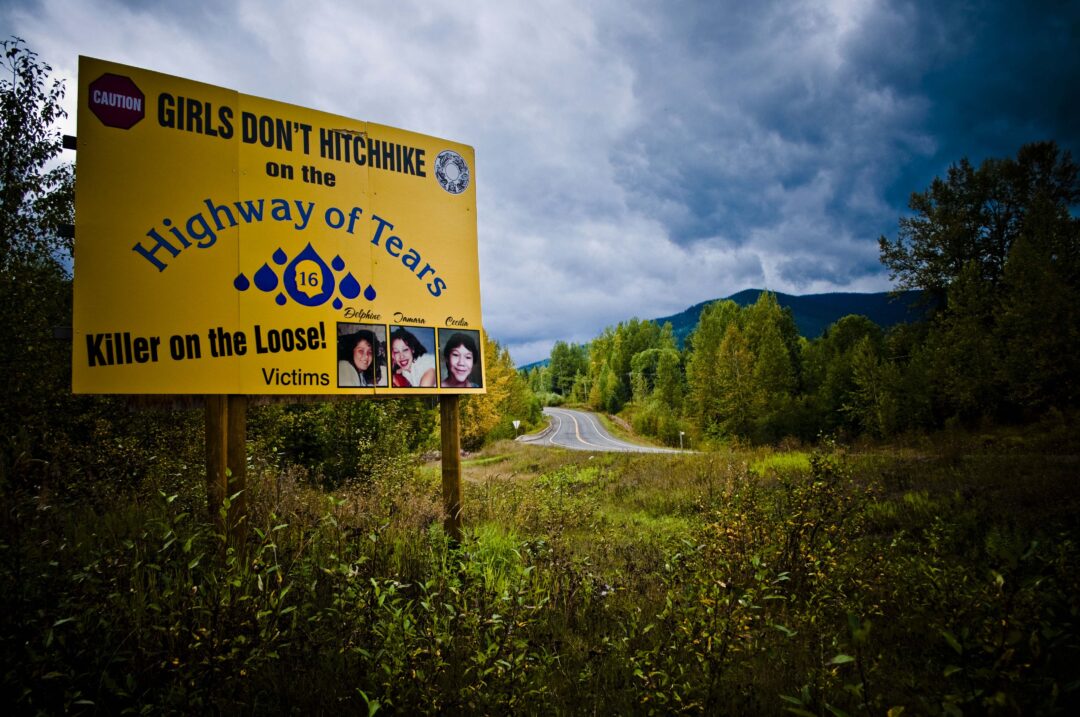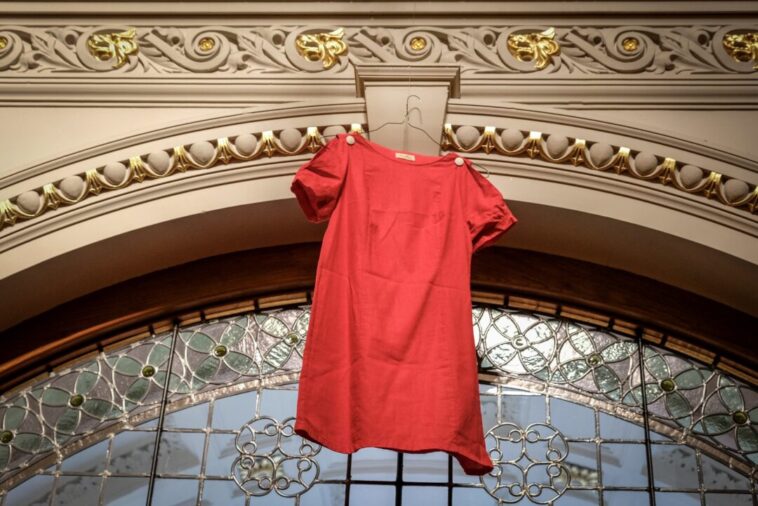Prince Rupert honoured the National Day of Awareness for Missing and Murdered Indigenous Women and Girls and Two-Spirit People (MMIWG2S), also known as Red Dress Day, on Sunday, May 5. Red Dress Day serves as a reminder of the ongoing crisis of innumerable missing and murdered Indigenous women, girls, and two-spirit people across Canada.
The Prince Rupert event began with a sacred fire at 10 AM at Galloway Rapids, and at noon, participants walked along the highway to Jim Ciccone Civic Centre as part of the red dress walk. At 5 PM, an art show and community gathering took place at the Centre, where a second sacred fire was lit by the Wilp Gitsiis family on their traditional territory. Participants wore red in recognition of the MMIWG2S.
On April 29, the Prince Rupert City Council declared May 5 the National Day of Awareness for Missing and Murdered Indigenous Women and Girls and Two-Spirit People (MMIWG2S) at a special regular meeting of council staff.
The council minutes state that “this day aligns with the City’s Framework Policy on Reconciliation as well as the overall broad goals to develop and support activities forwarded by the City’s new indigenous relations committee.”
Prince Rupert is located along what is known as the Highway of Tears, a stretch of Highway 16 known for being the location of many missing and murdered Indigenous women and girls.

According to Amnesty International, Indigenous women represent 16% of the femicide victims and 11% of all missing women in Canada despite representing 4% of the population. They are six times more likely to be murdered than non-Indigenous women, and their unsolved murders and missing cases have been the subject of outcry from many Indigenous communities and advocates.
In 2019, the federal government released a Final Report of the National Inquiry into Missing and Murdered Indigenous Women and Girls along with a National Action Plan, though currently, only two of the 231 Calls for Justice have been implemented. The Native Women’s Association of Canada’s 2023 annual report assessing action on the inquiry’s calls for justice deemed the federal government’s progress “a failure.”
The May 5 event was organized by locals Guu Gaa Jung (Symbia Barnaby), Marlena Joseph Clayton and Chantal Meggison. Financial support came from Prince Rupert Port Authority, Moose Lodge, Lxeen Community Services Society, and Gitga’at First Nation.







